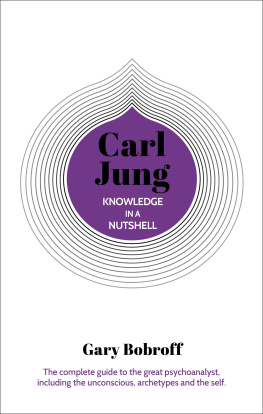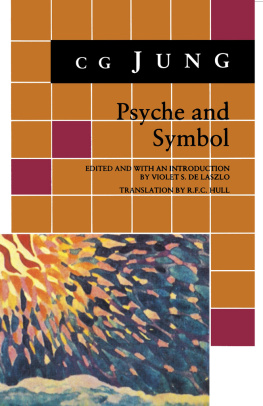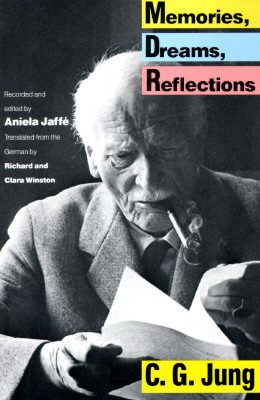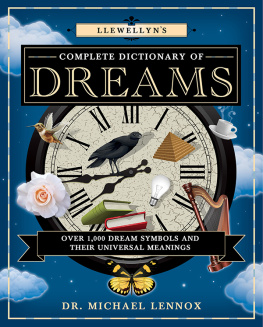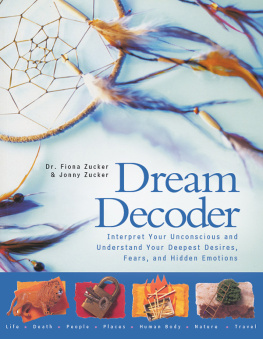THE UNDISCOVERED SELF
with
SYMBOLS AND
THE INTERPRETATION
OF DREAMS

from
The Collected Works of C. G. Jung
VOLUMES 10, 18
BOLLINGEN SERIES XX
THE UNDISCOVERED SELF
with
SYMBOLS AND THE
INTERPRETATION
OF DREAMS
C. G. Jung
With a new foreword by
Sonu Shamdasani
Translated and revised by R.F.C. Hull

BOLLINGEN SERIES

COPYRIGHT 1990 BY PRINCETON UNIVERSITY PRESS
FOREWORD TO THE 2010 EDITION COPYRIGHT 2011
BY SONU SHAMDASANI
PUBLISHED BY PRINCETON UNIVERSITY PRESS, 41 WILLIAM STREET,
PRINCETON, NEW JERSEY 08540
PRESS.PRINCETON.EDU
ALL RIGHTS RESERVED
First Princeton/Bollingen Paperback printing, 1990
Paperback reissue, with a new foreword by Sonu Shamdasani, 2010
The Undiscovered Self is 1957, 1958, by C. G. Jung, and the present text, translated and revised by R.F.C. Hull, is excerpted from Volume 10 of the Collected Works of C. G. Jung, Civilization in Transition (Second Edition), 1970 by Princeton University Press. The present text of Symbols and Interpretations of Dreams, revised by R.F.C. Hull, is excerpted from Volume 18 of the Collected Works of C. G. Jung, The Symbolic Life, copyright 1950, 1953, and copyright 1955, 1958, 1959, 1963, 1968, 1969, 1970, 1973, 1976 by Princeton University Press
LIBRARY OF CONGRESS CONTROL NUMBER: 2010934717
ISBN: 978-0-691-15051-2
Printed on acid-free paper.
Printed in the United States of America
1 3 5 7 9 10 8 6 4 2
TABLE OF CONTENTS
FOREWORD TO THE 2010 EDITION
READING JUNG AFTER THE RED BOOK
With the publication of Liber NovusJungs Red Booka new chapter opens in the reading of Jungs works. For the first time, one is in a position to grasp the constitution of Jungs work from 1914 onward, and to trace the intimate connections between his self-experimentation and his attempts to determine the typical features of this process through his work with his patients and translate his insights into a language acceptable to a medical and scientific public. Thus, reading Liber Novus brings with it the task of rereading Jungs Collected Worksmuch of which appears in a wholly new light.
In the winter of 1913, Jung embarked on a process of self-experimentation. He deliberately gave free rein to his fantasy thinking and carefully noted what ensued. He later called this process active imagination. He wrote down these fantasies in the Black Books. These are not personal diaries, but rather the records of a self-experimentation. The dialogues that form these active imaginations can be regarded as a type of thinking in a dramatic form.
When World War I broke out, Jung considered that a number of his fantasies were precognitions of this event. This led him to compose the first draft of Liber Novus, which consisted of a transcription of the main fantasies from the Black Books, together with a layer of interpretive commentaries and lyrical elaboration. Here Jung attempted to derive general psychological principles from the fantasies, as well as to understand to what extent the events portrayed in the fantasies presented, in a symbolic form, developments that were to occur in the world.
Jung recopied the manuscript in an ornate Gothic script into a large red leather folio volume, which he illustrated with his own paintings. The overall theme of the book is how Jung regains his soul and overcomes the contemporary malaise of spiritual alienation. This is ultimately achieved by enabling the rebirth of a new image of God in his soul and developing a new worldview in the form of a psychological and theological cosmology.
Between 1916 and 1928, Jung published a number of works in which he attempted to translate some of the themes of Liber Novus into contemporary psychological language. In 1928, the sinologist Richard Wilhelm sent him a copy of the Taoist alchemical treatise The Secret of the Golden Flower, inviting him to write a commentary. Struck by the parallelism between the imagery of the text and some of his own mandalas, Jung finally decided to set aside his work on Liber Novus and not publish it. Instead he devoted himself to the cross-cultural study of the individuation process, focusing on medieval alchemy in particular, using parallels with his own material as a means to present the process in an indirect and allegorical form. Until now, this has presented formidable challenges for readers outside of Jungs inner circle.
THE UNDISCOVERED SELF
In the aftermath of World War II, with the advent of the Cold War, the erection of the Berlin Wall, and the explosion of the hydrogen bomb, Jung found himself once again confronted with An apocalyptic age filled with images of universal destruction, In his personal confrontation, Jungs endeavor was one of resolving the conflicts that were reflected on the world stage within himself. In 1917, he wrote,
This war has pitilessly revealed to civilized man that he is still a barbarian.... But the psychology of the individual corresponds
In the decades that followed, Jungs attempts to develop a psychology and psychotherapy of individuation were dedicated to this task. By the 1950s, modern history had shown that the predicament confronting the individual was even more extreme than in 1917. In 1956, Jung took up these themes once more, in a short work entitled in German Present and Future (retitled in English The Undiscovered Self). Articulating these themes within the contemporary historical context, he argued that only self-knowledge and religious experience could provide resistance to the totalitarian mass society. In this regard, the individual had been failed by modern science on one side, and by organized religion on the other. What was required was a psychology that facilitated self-knowledge by reconnecting individuals with their dreams and the symbols that spontaneously emerged from withinwhich was the theme of Jungs last written work, Symbols and the Interpretation of Dreams, designed to convey his conceptions to a general public.
C. G. Jung, The Red Book, edited and introduced by Sonu Shamdasani and translated by Mark Kyburz, John Peck, and Sonu Shamdasani, Philemon Series (New York: W. W. Norton, 2009).
See 488, p. 94.
The Red Book, p. 253.
The Psychology of the Unconscious Processes, Collected Works 7, p. 4.
I
THE UNDISCOVERED SELF
(Present and Future)
1. THE PLIGHT OF THE INDIVIDUAL IN MODERN SOCIETY
What will the future bring? From time immemorial this question has occupied mens minds, though not always to the same degree. Historically, it is chiefly in times of physical, political, economic, and spiritual distress that mens eyes turn with anxious hope to the future, and when anticipations, utopias, and apocalyptic visions multiply. One thinks, for instance, of the chiliastic expectations of the Augustan age at the beginning of the Christian era, or of the spiritual changes in the West which accompanied the end of the first millennium. Today, as the end of the second millennium draws near, we are again living in an age filled with apocalyptic images of universal destruction. What is the significance of that split, symbolized by the Iron Curtain, which divides humanity into two halves? What will become of our civilization, and of man himself, if the hydrogen bombs begin to go off, or if the spiritual and moral darkness of State absolutism should spread over Europe?
Next page

